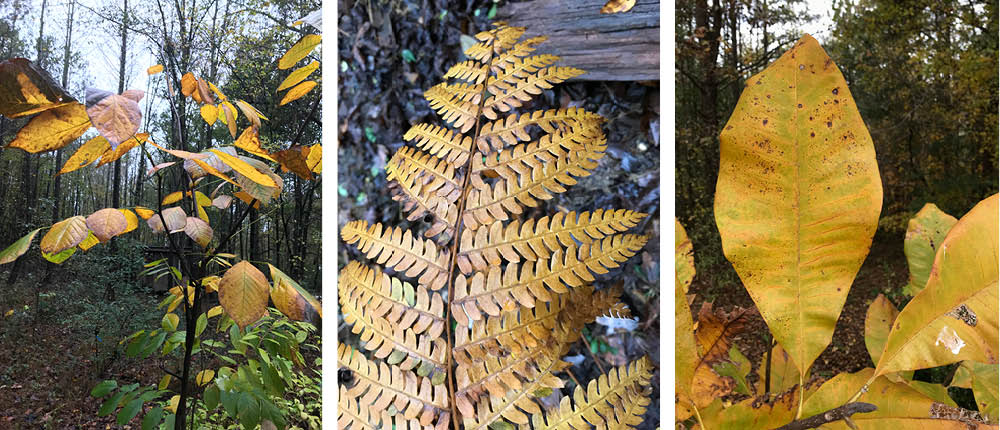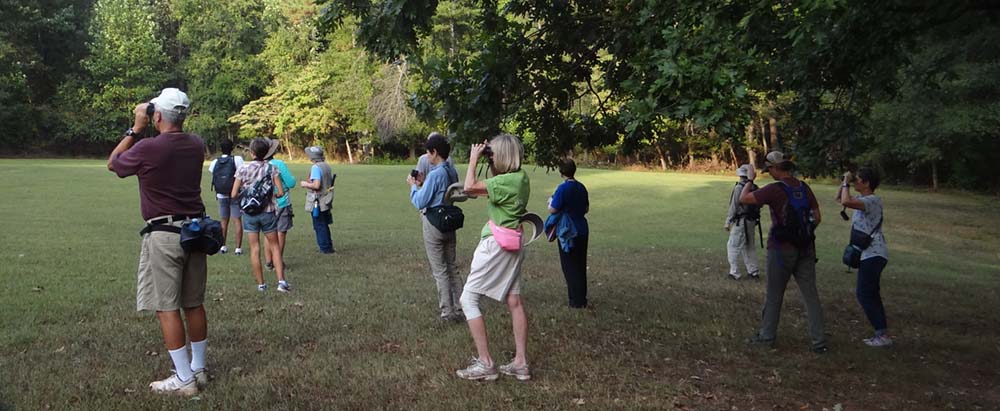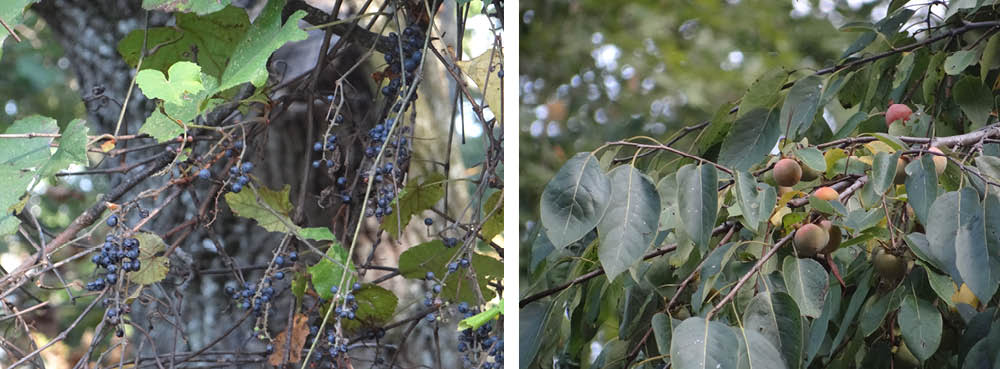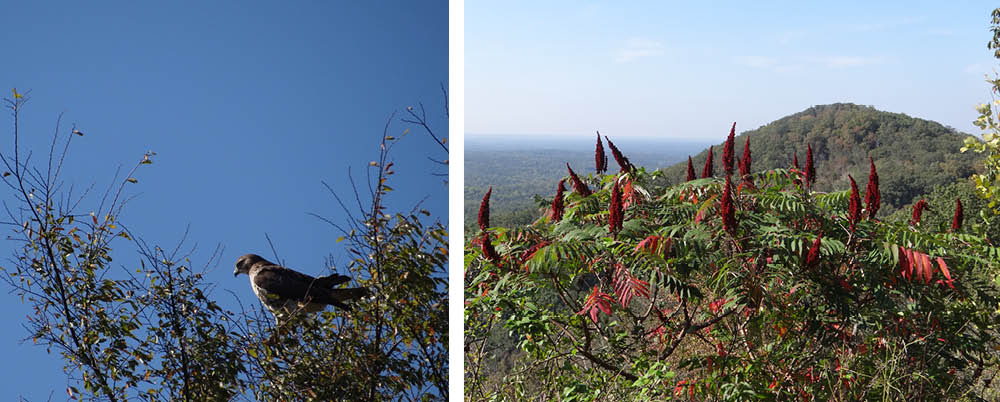Happy December Days to All
Lane Conville-Canney
What an incredible year this has been!
We had another standing room only Symposium learning from Larry Mellichamp and Scott Stewart and enjoying catching up with folks all over the state.
Throughout the year, I have loved learning about great work with our chapters. The West Georgia chapter celebrated the dedication of their educational kiosk on the Carrollton Greenbelt, the Redbud chapter started a four-part Native Plant Identification Series along the Gainesville Ridges, and the Coastal Plain chapter has been selling plants and providing education on coastal natives at the Wiregrass Farmers Market in Tifton.
Thanks to stellar volunteer leadership, both the spring and fall plant sales were tremendously successful and tons of fun. Hopefully, you have been enjoying our updated newsletters to keep you posted on the many, many events like our plant sales and bi-monthly programs in Atlanta and in chapter locations.
At this time of year, we invite you to continue growing with the Georgia Native Plant Society by renewing your membership. You can click here to check this off your list. All donations above your membership gift will be applied to programs such as plant rescues, habitat restoration and certification, plant propagation, and educational program and support. On behalf of the Georgia Native Plant Society Board of Directors, we thank you for your support, your time, and your dedication to stewarding our native plants and ecological communities.
Have a bright and joyful winter holiday!

Photo taken at the Coastal Plain Annual Business Meeting on the Altamaha Wildlife Management Area.
Chapter News: West Georgia
Marc LaFountain

Fall colors have come to West Georgia, including yellowood (Cladrastis kentukea), cinnamon fern (Osmundastrum cinnamomeum), and umbrella magnolia (Magnolia tripetala).
The West Georgia Chapter’s Fall Workshop and Plant Sale in September focused on wildflower meadows and highlighted presentations by Walter Bland (Rock Spring Restorations) and Leslie Edwards (GNPS). In keeping with our efforts to develop a wildflower meadow at the Meadow Entrance of the Buffalo Creek Trail, this theme was chosen to stimulate interest in meadows that can be planted in home landscapes. The presenters made a compelling case for starting meadows in small spaces.
The rains in recent months have set us back significantly. Flooding along Buffalo Creek and erosion on the hilly paths has required clean up and restoration of newly planted areas in the fern garden and along the creek banks.
In addition to the $1300 grant received from Carroll EMC in August, we also received a $3900 grant from the Community Foundation of West Georgia in November. Together these funds will allow us to complete the split rail fence enclosing the Meadow Entrance, add additional river rocks to the rain garden area, purchase bog and other plants for the rain and pollinator gardens, replace steps leading to our native azalea area, and purchase a self-propelled brush mower and other materials needed for regular maintenance of the Buffalo Creek Trail.
Current Board member and metal sculptor, Ben DeMayo, will create and donate a life size buffalo sculpture which will be placed in the field bordering the Meadow Entrance of the Buffalo Creek Trail and the Carrollton GreenBelt. We hope to have it in place by the end of the year.

Recent rains produced significant flooding and downed trees along Buffalo Creek.
Plant Spotlight: American Holly (Ilex opaca)
Ellen Honeycutt

Clockwise, from top left: Pyrmidal form of a typical American holly (Ilex opaca); leaves and berries of Ilex opaca, chaacteristic bark, and a hybrid cultivar showing leaves with fewer spines.
As deciduous plants drop their leaves, now is a good time to appreciate one of our native evergreen trees. American holly (Ilex opaca) is a medium-sized tree with simple, evergreen leaves that have spines. It is found in every region of the state, from the mountains to the Coastal Plain. Like other hollies, it is dioecious which means that plants usually have either male or female flowers but not both. The tiny white flowers bloom in May and properly pollinated female flowers form fruits that turn bright red in the fall.
I don’t often see the straight species in landscapes because cultivars are so popular. American holly-dahoon holly hybrids (Ilex opaca hybridized with Ilex cassine = Ilex x attenuata ) seem to be the most used. These hybrids have fewer prickles on the leaves and fruit very heavily. You may see them sold as ‘Savannah,’ ‘Fosteri’ and ‘East Palatka.’ These cultivars have the pyramidal shape of the American holly, but the leaves are different. American holly has small spines that evenly cover the leaf margins while the cultivars typically have a spine at the tip and a few others, none of which are very big.
In the wild, Providence Canyon State Park has a nice population of American holly all along the 3-mile loop trail. I visited the park one December and there were many individuals with fruit. The evergreen nature of the tree really stands out during the winter months so they’re easy to spot. There is also a nice single tree at Dunwoody Nature Center; it is in the landscaped area in front of the original building and usually has a good fruit set. Sometimes you can find them in old cemeteries too.
If American holly is native to your area, I hope that you will consider planting this unique native tree. Tolerant of many different soils and amounts of light, American holly is a versatile plant for the landscape. You’ll also be getting a great plant for wildlife – I’ve read that as many as 18 different species of birds eat the fruit and of course it is a great plant for shelter.
Native Plants and Migrant Birds at Kennesaw Mountain
Vinod Babu, Rona Cook, and Steve Cook

A woodland opening near the visitor center provided GNPS participants with a first look at several bird species.
Kennesaw Mountain is one of Georgia’s foremost “migrant traps,” places where a high number and variety of migrating songbirds can be seen and heard in spring and fall. It also boasts a range of native species that these birds rely upon for food and shelter. Kennesaw Mountain National Battlefield Park was the first spot in Georgia to be designated an Audubon Important Bird Area. On October 7, a GNPS workshop led by Vinod Babu explored this important habitat, with the main goal of observing fall bird migrants and how they interact with our native trees and plants. As we gathered in an open field, birds were spotted immediately. A hawk circled the large trees at the edge of the field, while sparrows ate hackberries and poke berries in a brushy area. The group continued up the road to the top of Kennesaw Mountain, peering into the woods on the right and looking out over the tree tops on the left.

Fox grapes and persimmons were among the bounty enjoyed by birds and a few GNPS members.
The participants were able to see some interesting fall migrants, such as Tennessee warblers, summer and scarlet tanagers, rose-breasted grosbeaks, black-throated green warblers, and a particular highlight was getting good looks at a hooded warbler, which is normally a hard-to-spot, skulking bird. We also observed plant species that populate Kennesaw Mountain’s ecosystem, such as chestnut oak (Quercus montana), red mulberry (Morus rubra), common hoptree or wafer ash (Ptelea trifoliata), black cherry (Prunus serotina), sumac (Rhus glabra), muscadine (Vitis rotundifolia), and fringetree (Chionanthus virginicus). Participants were able to sample some fruits, including American persimmon (Diospyros virginiana), hackberry (Celtis laevigata), and fox grape (Vitis labrusca). In addition, we saw a particularly high number of red-tailed hawks (seven), indicating that these birds were in migration. While red-tailed hawks are found in Georgia year-round, birds much further north move into and through the state in fall. Kennesaw Mountain often features updrafts that these and other hawks use to gain elevation on their way south.

Near the top of Kennesaw Mountain, one of several hawks remained vigilant.Sumac was plentiful in the area, flush with fruit.
Overall, this walk provided a good mix of fall migrants and summer visitors which would be moving south very soon. A couple of these summer-only residents we saw were chimney swifts and ruby-throated hummingbirds, which are somewhat related to each other as they are in the same order Apodiformes, the “footless” birds. Birds in this order are renowned for their skills in the air, and often have weak legs and feet, which makes the name very appropriate. Another similarity they share is their varying levels of dependence on humans for food and shelter. Ruby-throated hummingbirds readily exploit nectar feeders and suburban gardens, and the presence of feeders in winter and late-blooming garden plants allows a number of them to linger in the southern US in winter, instead of making the strenuous and often deadly flight to warmer climes across the Gulf of Mexico. For this same reason, Georgia in winter increasingly hosts hummingbird species that are not native east of the Mississippi, such as rufous, broad-billed, broad-tailed, black-chinned and calliope hummingbirds.
You may find more information about winter hummingbirds in Georgia at this Georgia DNR page, but note that some of the plants recommended for winter blooming are not native and may be invasive. Our bird count was over thirty species and also included woodpeckers, nuthatches, other warblers, vireos, bluebirds, cardinals, eastern phoebes, robins, wrens, vultures, catbirds, and towhees. (All photos here by Rona Cook. More at the GNPS web site.)
|